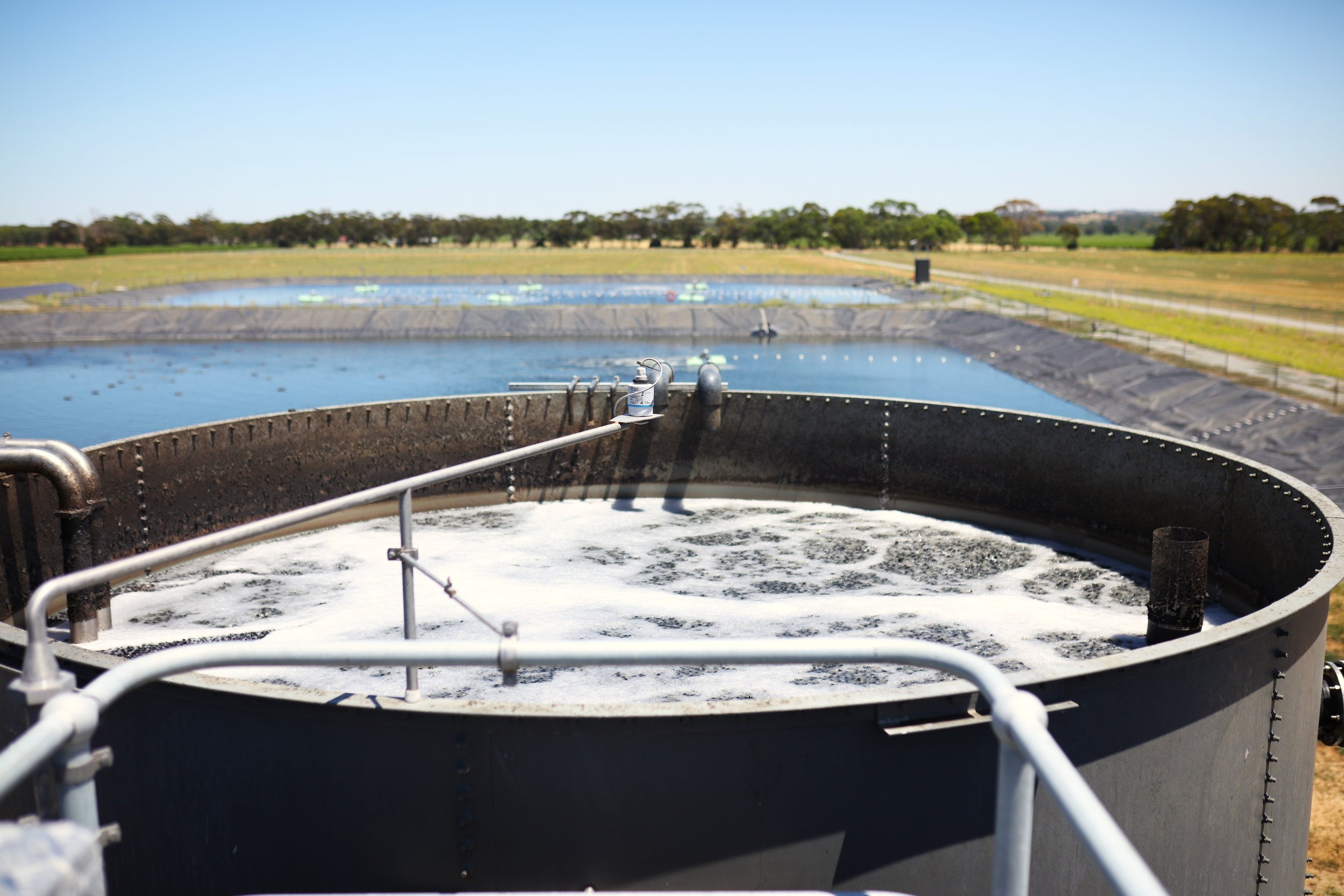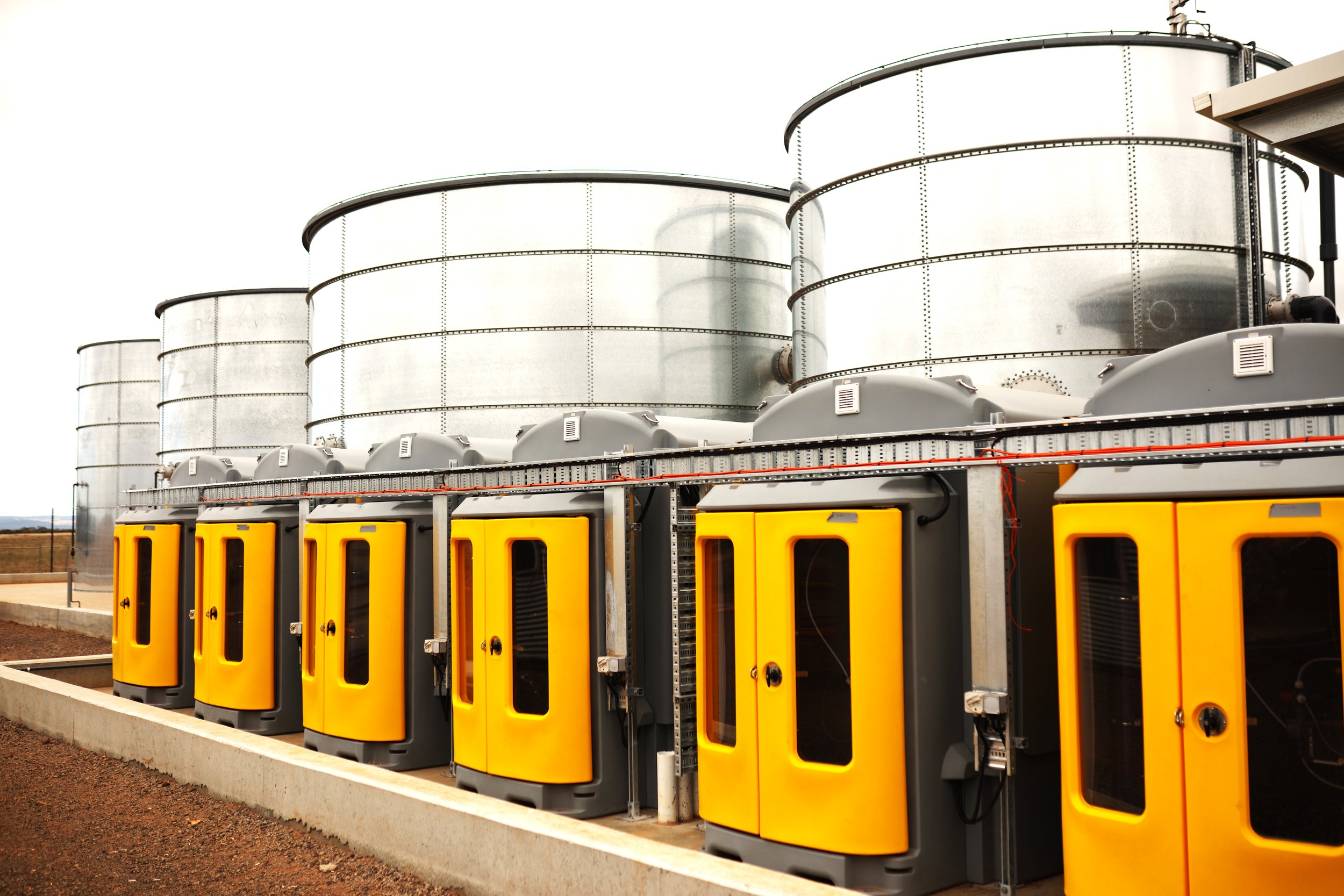
Understanding MBBR Technology
For Meat Processors, Food & Beverage Processors and Rendering Sites
Contents
Section 1: What is MBBR Technology?
Section 2: The Components of MBBR Technology
2.1. Biofilm Carriers
2.2. Reactor Tanks
2.3. Aeration System
2.4. Settling System
Section 3: How MBBR Technology Works
3.1. Biofilm Formation
3.2. Organic Matter Removal
3.3. Nitrification and Denitrification
3.4. Mixing and Aeration
3.5. Biomass Retention
Section 4: Applications of MBBR Technology for Wastewater Treatment on Food and Beverage Processing Sites
4.1. Meat Processors
4.2. Food and Beverage Processors
4.3. Rendering Sites
Section 5: Practical Tips for Optimizing MBBR Technology
Section 6: Operational Benchmarks for Industrial MBBR on Food Processing Sites
Section 7: Partnering with Waterform ultraBiox for MBBR Solutions
Conclusion
If you’re a food or beverage processor wondering what MBBR wastewater treatment technology is, you’ve come to the right spot.
Whether you’re forced by expansion plans or environmental regulation to look at updating your treatment plant, or you’re looking at a new site, MBBR technology may well be in the mix of potential wastewater solutions for your site.
The Short Version: Why Would MBBR Suit My Site?
Here’s why MBBR might suit your site;
You don’t have much space. MBBR is one of the most footprint-efficient biological nutrient removal wastewater treatment technologies available. It offers a significant footprint advantage over lagoons, and often an advantage over other tank-based treatment technologies too.
You need a treatment plant that can rebound quickly from plant upsets and toxic shocks. Due to its continuous treatment nature, MBBR is one of the technologies more capable of rebounding from toxic shocks within your processing plant, such as chemical spills.
The Detailed Version: How Does MBBR Wastewater Treatment Technology Work?
Welcome to our comprehensive guide on MBBR (Moving Bed Biofilm Reactor) technology for industrial wastewater treatment.
In this article, we will delve into the workings of MBBR technology, its components, and its applications in meat processing, food and beverage processing, and rendering sites.
By the end, hopefully you'll have a solid understanding of how MBBR can revolutionize wastewater treatment and enhance environmental sustainability in your facility.
Section 1: What is MBBR Technology?
MBBR technology is an advanced wastewater treatment system that combines the strengths of two proven technologies. It is specifically designed to efficiently remove organic pollutants, suspended solids, and nutrients from wastewater, offering a sustainable and cost-effective solution for the food and beverage processing industry.
Section 2: The Components of MBBR Technology in Industrial Wastewater Treatment
2.1. Biofilm Carriers
At the heart of MBBR technology are the biofilm carriers. These small, lightweight plastic media provide an ideal environment for microorganisms responsible for wastewater treatment.
The carriers maximize the surface area available for microbial growth, ensuring efficient treatment.
Waterform's ultraBiox brand offers a range of biofilm carriers designed to meet the demands of food and beverage processing sites.
2.2. Reactor Tanks
The MBBR system comprises reactor tanks where the wastewater treatment process takes place.
These tanks are meticulously designed to facilitate optimal contact between the biofilm carriers and the wastewater, maximizing the treatment capacity.
The configuration and size of the tanks can be customized to suit the specific requirements of your facility.
2.3. Aeration System
To maintain optimal oxygen levels in the reactor tanks, an aeration system is employed.
The system supplies air to the tanks, creating an ideal environment for the microorganisms to thrive and efficiently break down the pollutants in the wastewater.
Proper aeration ensures high treatment efficiency and prevents the formation of odorous compounds.
2.4. Settling System
After passing through the reactor tanks, the treated wastewater undergoes a settling process to separate it from the biomass.
This settling system removes any remaining suspended solids, ensuring that the discharged or reused water is clean and free from pollutants.
Waterform's expertise in designing efficient settling systems ensures the removal of solids without compromising the treatment process.
Section 3: How MBBR Technology Works
MBBR technology offers an efficient and reliable solution for treating industrial wastewater, including meat processing, food and beverage processing, and rendering sites.
It involves a biofilm process in which microorganisms attach to a moving bed of small plastic media within a reactor.
Let's dive into the working principles of MBBR technology:
3.1. Biofilm Formation
The heart of MBBR technology lies in the formation of a biofilm.
The plastic media within the reactor provide a large surface area for microorganisms to grow and attach to.
These microorganisms, including bacteria and fungi, form a biofilm that acts as a biological filtration layer.
3.2. Organic Matter Removal
The biofilm on the plastic media actively breaks down and consumes organic matter present in the wastewater.
This includes fats, oils, proteins, and other complex organic compounds commonly found in food and beverage processing effluents. The microorganisms utilize these compounds as a food source, converting them into harmless byproducts.
3.3. Nitrification and Denitrification
In addition to organic matter removal, MBBR technology facilitates nitrification and denitrification processes.
Nitrification is the conversion of ammonia (NH₃) to nitrite (NO₂-) and further to nitrate (NO₃-), which is essential for wastewater with high ammonia concentrations.
Denitrification, on the other hand, converts nitrate back to nitrogen gas (N₂), reducing its environmental impact.
3.4. Mixing and Aeration
To ensure optimal performance, MBBR reactors are equipped with aeration systems and mixing devices. Aeration supplies oxygen to the microorganisms, supporting their metabolic processes and enhancing treatment efficiency.
Mixing prevents media clogging and promotes uniform distribution of wastewater and biomass throughout the reactor.
3.5. Biomass Retention
One key advantage of MBBR technology is its ability to retain biomass effectively. The plastic media provide a stable environment for the biofilm, preventing washout during high flow conditions.
This ensures a consistent microbial population, leading to stable treatment performance and resilience against hydraulic shocks.
Section 4: Applications of MBBR Technology for Wastewater Treatment on Food and Beverage Processing Sites
4.1. Meat Processors
MBBR technology offers meat processors a sustainable solution for treating wastewater generated during various stages of meat production.
By effectively removing organic pollutants and nutrients, MBBR systems help ensure compliance with environmental regulations while reducing the strain on natural resources.
4.2. Food and Beverage Processors
From fruit and vegetable processing to dairy and beverage production, food and beverage processing sites can benefit greatly from MBBR technology.
By efficiently treating wastewater, these facilities can minimize their ecological footprint, preserve water resources, and contribute to a more sustainable food production chain.
4.3. Rendering Sites
Rendering sites face unique challenges in wastewater treatment due to the presence of fats, oils, and greases (FOGs).
MBBR technology, with its ability to handle a wide range of organic pollutants, including FOGs, provides rendering sites with a reliable and effective solution for wastewater treatment.
Section 5: Practical Tips for Optimizing MBBR Technology
Maintain proper oxygen levels: Regularly monitor dissolved oxygen levels in the reactor to ensure optimal conditions for microorganisms. Adjust aeration rates accordingly to promote efficient biological activity.
Consider media surface area: The choice of plastic media and its surface area per unit volume significantly impacts the MBBR's performance. Consult with experienced wastewater solution providers like Waterform, who specialize in delivering ultraBiox MBBR systems, to select the most suitable media for your specific requirements.
Ensure proper mixing: Effective mixing prevents dead zones and ensures uniform distribution of wastewater and biomass. Avoid overmixing, as it can cause excessive media abrasion and degradation.
Regularly monitor and control pH levels: pH plays a crucial role in microbial activity. Monitor and adjust pH levels within the recommended range to maintain optimal treatment efficiency.
Perform regular maintenance: Periodically inspect and clean the plastic media to prevent clogging or biofilm detachment. Implement a proactive maintenance schedule to ensure the long-term performance and reliability of your MBBR system.
Section 6: Operational Benchmarks for Industrial MBBR on Food Processing Sites
To gauge the performance and effectiveness of your MBBR system in food processing wastewater treatment, it's important to establish operational benchmarks.
These benchmarks serve as valuable indicators of the system's efficiency and provide insights into areas for optimization.
Here are some key benchmarks to consider along with the values or ranges to aim for:
Organic Removal Efficiency (ORE):
The ORE measures the system's ability to remove organic contaminants from the wastewater. Aim for an ORE of 90% or higher. This indicates that the MBBR system effectively removes organic matter, resulting in cleaner treated wastewater.
Ammonia-Nitrogen Removal Efficiency:
Monitor and aim for an ammonia-nitrogen (NH₃-N) removal efficiency of 90% or higher. This benchmark ensures effective removal of ammonia, a common pollutant in food processing wastewater, meeting regulatory requirements and minimizing environmental pollution.
Nitrate-Nitrogen Removal Efficiency:
For sites where denitrification is necessary, aim for a nitrate-nitrogen (NO₃-N) removal efficiency of 90% or higher. This indicates successful conversion of nitrate-nitrogen to nitrogen gas, reducing nitrogen discharge and its environmental impact.
Hydraulic Retention Time (HRT):
The recommended hydraulic retention time depends on the specific wastewater characteristics and treatment objectives. Aim for an HRT range between 4 to 8 hours to provide sufficient time for microbial activity and pollutant removal.
Sludge Retention Time (SRT):
To maintain a healthy microbial population and optimize treatment efficiency, aim for an SRT range between 10 to 20 days. This ensures a stable biofilm and promotes effective organic matter degradation.
Energy Consumption:
Benchmark the energy consumption of your MBBR system to identify opportunities for energy optimization. Aim to minimize energy usage by implementing energy-efficient equipment and optimizing aeration rates. Consider energy consumption levels below 1 kWh per cubic meter of treated wastewater as a target.
System Reliability:
Aim for high system reliability by minimizing system failures, maintenance requirements, and downtime. Strive for a system reliability rate of 95% or higher, ensuring uninterrupted wastewater treatment operations.
Section 7: Partnering with Waterform ultraBiox for MBBR Solutions
When it comes to implementing MBBR technology for food and beverage processing sites in Australia, Waterform stands as a reliable partner with extensive experience in delivering ultraBiox biological wastewater solutions.
Their expertise in designing and optimizing MBBR systems can help you achieve outstanding treatment results while complying with local regulations.
Conclusion
In conclusion, MBBR technology is a game-changer in the field of industrial wastewater treatment.
It offers a sustainable and cost-effective solution for meat processors, food and beverage processors, and rendering sites. By embracing MBBR technology, your facility can minimize its environmental impact, ensure compliance with regulations, and contribute to a more sustainable future.
For more information on Waterform's experience in delivering MBBR solutions under the ultraBiox brand, visit www.waterform.com.au/projects.
Remember, efficient wastewater treatment is not only an environmental responsibility but also a strategic advantage for your business. Embrace MBBR technology and unlock the potential for a cleaner, greener, and more profitable future.






